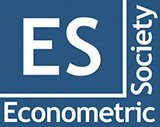Econometrica
Journal Of The Econometric Society
An International Society for the Advancement of Economic
Theory in its Relation to Statistics and Mathematics
Edited by: Guido W. Imbens • Print ISSN: 0012-9682 • Online ISSN: 1468-0262


